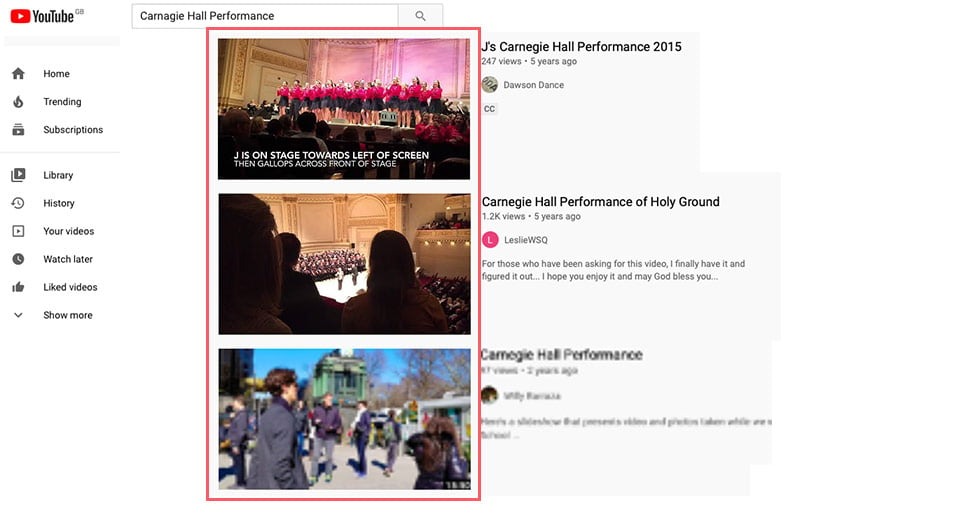
Radically Boost Video Attention by Using a Happy-Frame Thumbnail

Jasmine Yang
By Jasmine Yang, PhD Student at Columbia Business School
The internet has drastically reduced barriers to the distribution of videos through a variety of online video platforms such as YouTube, Netflix and Bilibili. According to Business Insider, by 2021, video content will capture around 82% of Internet traffic, up from 73% in 2016 . Every minute there are more than 500 hours of videos uploaded to YouTube.
Consumers face an enormous volume of options to entertain themselves. Given the unprecedented proliferation of video content on a variety of digital channels, determining how to effectively promote video content and to entice viewers with the content even after they click in is a challenge faced by many online content aggregators and advertisers.
Video Thumbnails a Gatekeeper of Attention
Besides video titles and publishers, online video platforms historically use thumbnails as their major marketing tool to help consumers pick a video after an initial search. Thumbnails are reduced-sized preview images of videos that serve as a snapshot of the video and provide first impression to viewers. By including the scene of the video that elicit major emotions that viewers will experience while watching the video, a thumbnail allows viewers to form expectations of what they are going to see before even starting the video.
An ideal thumbnail should make a video more attractive to click at first, but at the same time it should be relevant to the video content in order to match people’s expectations of video after they click in. For advertisement videos in particular, a thumbnail that is both attractive and relevant to its video content can in turn increase click-through rates, engagement, liking and the likelihood of purchase, which in turn increases a company’s advertisement revenue and the efficiency of promotional expenditures. For these reasons, it is important to have a systematic understanding of what makes a good thumbnail in terms of both attracting views and increasing viewers’ overall video experience as they click in to watch through the content.

Decoding Video Thumbnail Performance
What makes for a good thumbnail in terms of increasing views and interaction rates? What is the influence of thumbnails on viewers’ selection behavior and experience of online videos? To answer these questions, I teamed up with Oded Netzer, my faculty sponsor and collaborator at Columbia Business School, and the team at Realeyes to conduct an innovative online experiment using emotion AI and facial coding.
In our experiment, 298 participants watched 6 different 15-30 seconds long advertising videos - DiGiorno, Folgers, Geico, Kind, Snickers, Uncle Ben’s - in their natural environment (e.g. work, home). Prior to watching each video, the participants were shown a set of 7 different thumbnails which corresponded to the first, last, attention-peak, happy-peak, content representative and most items frames of the video. The participants were asked to select the video based on thumbnails they saw to start the video. Attention and emotions were then tracked remotely through the webcams on their computers. At the end of the experiment, the participants were asked to answer questions regarding their evaluations of the thumbnails they used for deciding which thumbnail to click.
Advertisers Can Radically Boost Viewing Attention On Digital Platforms by Using a Happy-Peak Frame as The Video Thumbnail
Controlling for other variables such as the colorfulness of the image and whether brand logos are featured on the face cover, the study finds that choosing a happy-peak frame to start the video increases people’s attention for about 0.10 units, with attention measured in the range from 0 to 1. The average attention level of watching the video across the sample is about 0.7, which translates into about 14% increase in attention when using a happy-peak frame as the starting face cover. This result is statistically significant at 1%. This is an important insight for advertisers and publishers whose goal is to compete for attention, and entice viewers with their video content. By building the happy emotion ahead in consumers’ mind through thumbnails, advertisers can better encode the distinctive assets into the consumers’ mind much better and entice viewers with messages they hope to deliver more effectively.
Another interesting finding suggests that using the happy-peak frame of the video as thumbnail can potentially increase viewers’ attention level at the attention-peak frame of the video for about 16%. This finding suggests that companies could strategically put the most essential elements of their advertising messaging – such as brand logos or major products – in the attention-peak frame of the video and use the happy-peak frame as the thumbnail of the video. This can potentially elicit more attention to the attention-peak frame from viewers, highlighting the brand at the scene where peak attention is detected.
Image Saliency Also Drives Thumbnail Attention Performance
We also are interested in learning what makes for a good thumbnail in attracting viewers’ attention from an art and photography perspective. In particular, we found that thumbnails that have warmer colors, higher saturation levels and lower brightness lead to about 16%, 17%, 26% increase in attention, respectively. In addition, image saliency can be achieved by contrasting the main object in the image and its surrounding background in many different ways, such as through a contrast in color and size. The results show that using more salient images as face covers to promote videos can increase attention 26% on average. This finding supports past research in content advertising, suggesting that images that are more salient with more saturated colors can increase viewers watching intention and potentially lead to a greater product demand. These results should guide companies to use images that are more salient, i.e., higher contrast based on size difference followed by color difference, to entice viewers with their video content.
Thumbnail Performance A Major Opportunity For Advertisers & Publishers
Videos delivered by many media companies still use default choices such as first, middle or last frames as the thumbnail for their product advertising videos. Advertisers and marketers need to apply best practices and better tools to produce thumbnails that attract views and increase people’s viewing experiences. To induce viewers to experience more positive affect and to watch the full video content, companies should adopt the happy-peak frame of the video with more image saliency as the thumbnail to embed this emotion early into viewers’ minds.
In the videos we tested (major consumer brand advertisements), there were fewer other types of emotions such as surprise and fear. However, this result can be potentially generalized to other settings. For example, picking an image that maximizes other emotions as the video thumbnail can be important for other types of ads such as fear appeals, attracting consumers’ attention to products by embedding them in such emotions early on.

